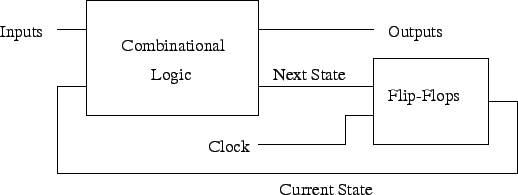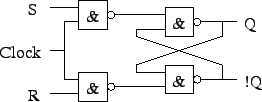There will always be some asynchronous elements in a circuit which interfaces to the real world environment.
Non-overlapping clocks.

This is the basic idea, to be modified for actual use.

Tom Kelliher, CS 240
Mar. 28, 2008
Read 5-3.
Finished Xilinx introduction lab.
Flip-flops
There will always be some asynchronous elements in a circuit which interfaces to the real world environment.
Non-overlapping clocks.

This is the basic idea, to be modified for actual use.



Behavior.
Latched when clock is low.
A solution: non-overlapping clocks. (Achieved with master-slave flip-flops.)

(Think of this as a logic primitive.)